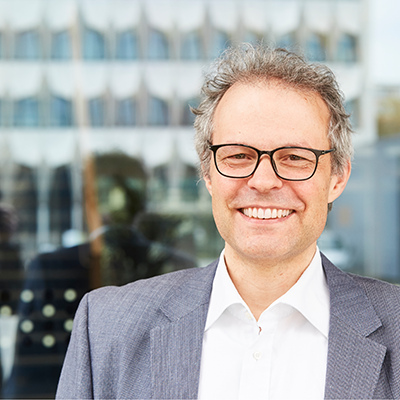Cutting-edge Research at h_da

Spitzenforschung an der h_da
The range of projects at Darmstadt University of Applied Sciences (h_da) funded by the German Research Foundation (DFG) ranges from migration issues to research on sustainable fuels. Below you will find an overview of the current projects (as of March 2022) in the form of short, generally understandable texts. Detailed information is available on the websites of the professors involved and in the DFG database GEPRIS.
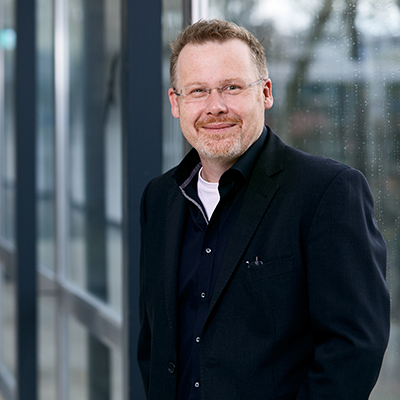
One of Earth’s most valuable treasures lies at a depth of 120 metres in the ice of the island of Spitsbergen. Behind the thick concrete walls of the Svalbard Global Seed Vault, the largest in the world, the seeds of humankind’s most important crops are stored and refrigerated at a constant temperature of -18 °C. As far as digital information is concerned, however, we still have a very long way to go – a comprehensive “information vault” doesn’t exist. Above all not for digital data. Already today, it is often the case that commercially available computers are no longer able to open text files from the 1990s and early 2000s. Professor Stefan Schmunk from the Faculty of Media believes that the period from the mid-1980s to the mid-2010s could therefore become a “Dark Age” for coming generations.
How can we preserve digital documents from contemporary history for posterity? Which formats will still be usable in 10, 50 or 100 years? How must we build and structure research infrastructures so that research data can be re-used? The “Text+” project is part of a huge national effort to solve these questions: since 2018, Germany’s federal and state governments have been funding the “National Research Data Infrastructure” (NFDI). Under its umbrella, 20 consortia are working on a common goal: to process data primarily generated locally in research institutions and universities in such a way that they remain easily accessible, locatable and usable on a permanent basis. In the NFDI context, the “Text+” project focuses on the area of language and text, more specifically on the following categories: collections, lexical resources and editions.
Text: Christina Janssen and Nico Damm, 24.3.2022
A popular saying among statisticians is: “Without data, you’re just another person with an opinion.” Data are a valuable commodity. They are considered the “crude oil” of the 21st century. Companies, science and politics derive important insights from data. That care and expert knowledge are what matter is revealed to us quite plainly every day by the coronavirus pandemic.
To harvest knowledge from ever larger and more complex amounts of data, various statistical methods are used, including something known as hypothesis testing. Here, mountains of data are analysed thousands or millions of times – for example information about cancer patients and their chances of recovery – by means of statistical tests. The problem: the more tests, the more frequently false discoveries occur. Rapid antigen tests for SARS-CoV-2 are a similar case at hand: if you test yourself often enough, sooner or later the result will be positive, even if you are not infected.
Multiple testing research, with which mathematician Professor Sebastian Döhler is also dealing, seeks solutions for this problem. In his current DFG project, he is working on new statistical methods, together with a colleague from Sorbonne University (Paris), which function more reliably and efficiently than previous ones. Many fields would be able to profit from this, from medicine, banking and insurance to astrophysics. And yes, naturally also tech giants such as Google or Apple. These, however, have their own research departments to get to the bottom of such questions…
Text: Christina Janssen, 25.3.2022
Website: mn.h-da.de/doehler-sebastian/researc
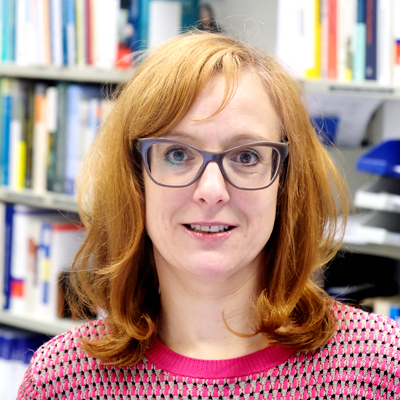
Cities are regarded as places of inclusion. But they can also be places of exclusion. Professor Margit Fauser, migration expert, places this aspect, which research has so far accorded little attention, in the spotlight: she is examining the role of cities in migration control and how migrants experience it. Her work is thus concerned with the emergence of borders in the middle of our cities – for example through identity checks on the street or the checking of residence status by social services or in relation to healthcare.
In her project funded by the German Research Foundation (DFG), Margit Fauser compares the two global cities of Frankfurt am Main and Madrid as well as two less globalised cities, Dortmund and Bilbao. In what way are local actors involved in migration control? And how do their activities in the areas of work, health or family affect social and territorial borders? What differences can be seen in the chosen cities and how can they be explained? What is the relationship between urban citizenship and control? To find answers to these questions, “border crosser” Fauser uses above all narrative interviews with representatives of local authorities and social organisations, welfare associations and NGOs as well as biographical interviews with migrants, alongside official statistics and documents.
In this project, Fauser brings three previously separate research strands together – migration research, border studies and urban studies – to close the knowledge gaps in this key socio-political domain. In so doing, she is contributing to an empirical and theoretical understanding of cities and urban spaces in a situation where borders in Europe are shifting – both spatially and in terms of organisation – beyond the classical borderline and its surveillance. This will help to better comprehend the interaction between inclusion and exclusion, citizenship and control in European cities. (jan)
Text: Christina Janssen, 25.3.2022
Professor Margit Fauser’s website: sozarb.h-da.de/fachbereich/lehrende/professorinnen/margit-fauser
Project website: sozarb.h-da.de/borderspaces
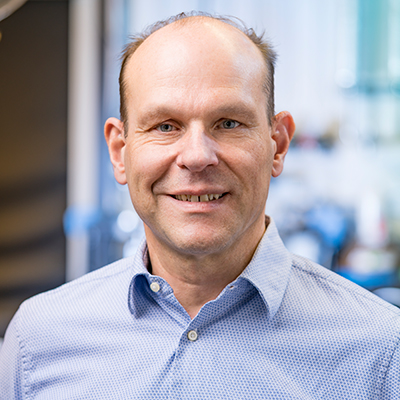
Professor Dirk Geyer is ardent about his research. In his lab, he uses sophisticated, state-of-the-art laser measuring technology to study combustion processes. The problem: not all flames are the same. A fundamental distinction is made between two types: “premixed” and “non-premixed”. In the first type, fuel and air (more precisely: oxygen as oxidiser) are mixed prior to entering the combustion chamber, and in the second type only once they are inside. Both types of flame have been extensively studied experimentally and described using mathematical models. And yet, as so often, here too the “truth” lies somewhere in between because, in practice, a common flame type is a mixture of both models – such as is found in gas turbines or combustion engines.
That is why Dirk Geyer, mechanical engineer and thermodynamics expert, is taking a closer look at these mixed forms in his German Research Foundation (DFG) project. So far, hardly any research has been conducted in this area. A better understanding of these processes could, however, make an important contribution to more efficiency and sustainability. In his project, he uses laser diagnostics to study such flames experimentally. Cooperation partners then develop models and simulations for the “mixed” flame type (in technical jargon: multi-regime flame structures) on the basis of the experimental data. Together, they derive optimal, universally valid technical parameters for such combustion processes. This is important not only for optimising existing technologies but also for developing new ones with modern energy sources: a topic in which Geyer and his team from the Laboratory for Optical Diagnostics and Renewable Energies (ODEE) at h_da have a burning interest.
Text: Christina Janssen, 25.3.2022
What crosses your mind when you ignite the blue flame on your gas hob? Can’t wait for my fried potatoes? What Professor Dirk Geyer thinks about in such moments is the temperatures and individual components in the flame, such as oxygen. For him as a researcher, “flame” is the phenomenon at the focus of his work. To be more precise: which measuring techniques can be used to study the processes going on inside it.
The fuel ethanol is at the centre of Dirk Geyer’s second current German Research Foundation (DFG) project. This colourless, highly flammable alcohol is a hydrocarbon. Its molecular formula: C2H6O. Since energy is stored more densely in hydrocarbons than in other fuels, some areas of mobility, such as freight or air transport, will in future, in Geyer’s view, be inconceivable without them. Regenerative fuels such as ethanol, which are produced from plants or, even better, from renewable energy, are seen as an important part of climate protection.
But what exactly happens in the flame when ethanol is burned? Although the question sounds simple, it’s a difficult one to answer. The chemical processes in ethanol flames, such as most frequently occur in technical applications (technical term: “turbulent premixed ethanol flames”), have not yet been studied and are far mor complex than, for example, those in the combustion of hydrogen or methane. The only thing plainly clear is what comes out at the end: carbon dioxide and water. Mechanical engineer Dirk Geyer and his team want to develop an optical measuring technique that makes it possible to study the temperature of the flame at a given point. Or where in the flame the individual components (e.g. ethanol, hydrogen, carbon dioxide or oxygen) appear in which concentration. This requires a meticulous approach and using a specially developed high-tech variant of Raman spectroscopy as the method.
The objective of the DFG project is to use ethanol as an example to lay the groundwork for research into comparable fuels and thus also for their technical application.
Text: Christina Janssen, 25.3.2022
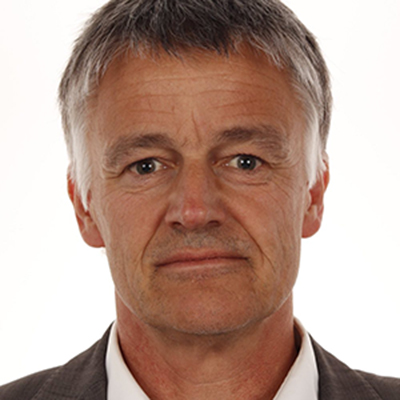
What do financial institution J.P. Morgan, the LinkedIn business network and the eBay e-commerce platform have in common? They are all on the list of the ten biggest hacker attacks of the past years. Hundreds of millions of datasets were phished. An arms race is waging on the internet between cyber criminals and security experts: the latter develop new security procedures, the former try to crack them. A special type of cyberattack are “presentation attacks”, where the impostor masquerades as someone else. It’s with these, or rather with intercepting them, that computer scientist Professor Christoph Busch is dealing in “RESPECT”, his current German Research Foundation (DFG) project. He aims to make biometric systems, which function, for example, via fingerprint or iris scan, even more secure.
Together with colleagues from EURECOM in France, Busch is working on new methods that combine several biometric modalities. Because one thing is clear: for impostors, it’s more difficult to fool several biometric capture devices at the same time than just one. The problem: to guarantee the necessary security on the one hand and protect privacy on the other, such “multi-biometric systems” require immense computing capacities. Busch, an expert in cyber security, wants to solve this currently unsolvable dilemma – a kind of Gordian Knot. He is searching for combinations of characteristics that “smart” devices such as cell phones can reliably capture and whose encryption is at the same time computationally realistic. The promising candidates are face, iris and voice, but Busch is also considering speech fragments and lip movements. Smile, please!
Text: Christina Janssen, 24.3.2022
Proessor Christoph Busch’s website: www.christoph-busch.de/about_de.htm
Project title: RESPECT: REliable, Secure and Privacy preserving multi-biometric pErson authentiCaTion
Project description in the DFG data base (in German): https://gepris.dfg.de/gepris/projekt/406880674
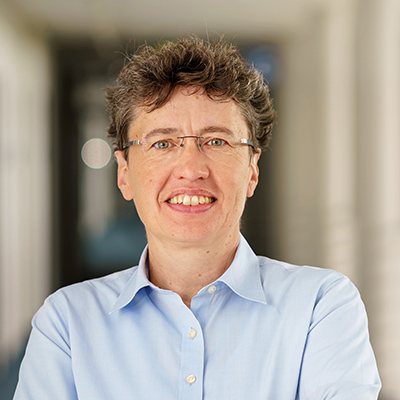
“What meaning is there to life if a person has no time?” Wouldn’t it be a shame if wise sayings like this were at some point to fall into oblivion? Frank Wedekind (1864-1918), from whom the quote originates, numbers among the seminal authors of literary modernism – and is at the centre of Professor Uta Störl’s project funded by the DFG (German Research Foundation. The idea: to collate Wedekind’s correspondence in a database and make it publicly available. We’re talking about around 3,800 manuscripts, of which only parts have so far been published. They are archived in over 100 institutions in Germany and abroad.
In the project, all these letters will be transcribed and include a scientific commentary section. A beta version of the database, which was developed in cooperation with the Editions- und Forschungsstelle Frank Wedekind (EFW), a research group at h_da, was already launched in 2015, and the software is now being upgraded. Central to the database is its simple handling – something far from self-evident when working with complex databases. Entering new texts, search function and presentation are web-based – a unique feature of this concept. Editors do not have to do any programming themselves in order to enter manuscripts. Coding the files in the required format is done by an editing tool developed for this purpose. The project has model character: the database’s software has a modular structure and can be used later by other digital editions. A milestone at the interface between philology and technology.
Professor Uta Störl, who is meanwhile conducting research and teaching at the FernUniversität in Hagen, Germany’s state distance-learning university, (www.fernuni-hagen.de/dbis/team/uta.stoerl.shtml), is bringing the Wedekind project to a close at h_da. Her project partner is Professor Ariane Martin from Johannes Gutenberg University Mainz (JGU). The present status of the database project can be viewed under https://briefedition.wedekind.h-da.de.
Text: Christina Janssen, 24.3.2022
The only constant in life is change. This insight is at the heart of the second German Research Foundation (DFG) project by Professor Uta Störl at the Faculty of Computer Science. She is working on a new generation of databases that are comparatively easy to handle.
Unlike older, still common “relational” databases, NoSQL databases, which researcher and computer scientist Professor Störl is examining, do not require any predefined schemas, meaning that it is not necessary to define a fixed structure to store data As a consequence, NoSQL databases rate as more flexible and easier to handle. The reason why this is so important is that data, due to technical progress, must be transferred to new systems again and again. Experts call this “data migration”. Almost everyone is familiar with this in a similar form when an app or website is updated, or you buy a new cell phone and have to import your data. In such situations, there are less problems with NoSQL databases.
In her project, Uta Störl is testing a new component for NoSQL databases that was developed by her team (including many h_da Master’s students). The aim is to identify optimal migration strategies and in this way support software developers. This also includes compiling a software-based data migration advisor. All this will make a significant contribution to the efficient handling of large amounts of data.
Professor Uta Störl is bringing the project to a close at h_da and meanwhile conducting research and teaching at the FernUniversität in Hagen, Germany’s state distance-learning university.
Text: Christina Janssen, 24.3.2022
Website: www.fernuni-hagen.de/dbis/team/uta.stoerl.shtml
Contact details
Christina Janssen
Scientific editor
Press department
Tel.: +49.6151.16-30112
E-Mail: christina.janssen@h-da.de
Translation: Sharon Oranski
